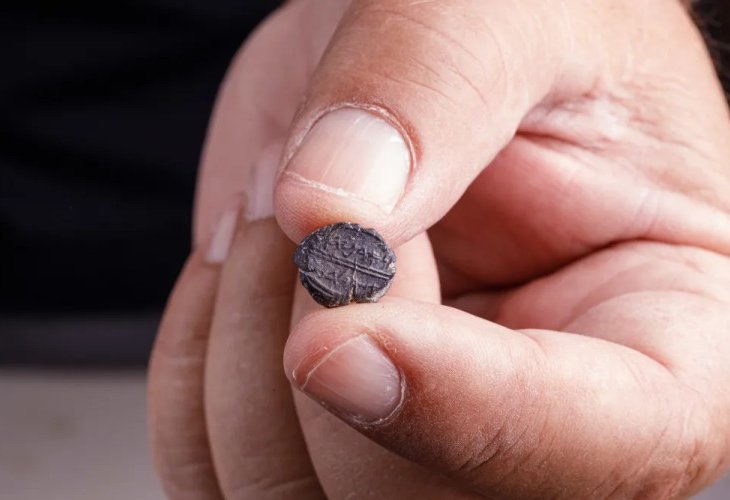Ancient Seal Unearthed in Jerusalem: A Glimpse into Biblical Times
A rare seal impression, or bulla, bearing a Hebrew name from the Bible and dated to the 7th century BCE, emerged north of the City of David, near the Western Wall's foundations. This bulla describes the title 'over the house,' indicating a high-ranking official position in the Judean Kingdom.
 The uncovered bulla (Photo: Eliyahu Yanai, courtesy of City of David)
The uncovered bulla (Photo: Eliyahu Yanai, courtesy of City of David)A Time-Capsule from the Past: A bulla, or seal impression, bearing a Hebrew name from 2,600 years ago has been uncovered north of the City of David. The bulla mentions a top role in the royal court of the Kingdom of Judah.
Archaeologist Eli Shukron, who led the dig, said, "This is the first time a bulla of this type has been discovered in Jerusalem within an archaeological excavation. The bulla was stamped by the chief minister of the royal palace of the Kingdom of Judah, and it is undoubtedly a very significant find."
The bulla, used for sealing documents, features the ancient Hebrew inscription "Adoniyahu who is over the house." Measuring about a centimeter, the script type dates the bulla to the 7th century BCE, the era of the Kingdom of Judah.
The term "over the house" describes the top-ranking role in the royal hierarchy in the kingdoms of Judah and Israel. This title first appears in the list of Solomon’s officials, referring to influential figures close to the king.
For example, in 1 Kings, chapter 18, "Obadiah who is over the house" is mentioned as serving in this role during King Ahab's reign in the Kingdom of Israel, in the time of the prophet Elijah. During his service, Obadiah acted against Queen Jezebel, Ahab’s wife, in managing the kingdom, and even saved a hundred prophets of Hashem by hiding them in a cave.
During King Hezekiah's time, "Eliakim son of Hilkiah who is over the house" held this important position. According to Isaiah, chapter 36, Eliakim negotiated with Rabshakeh, one of Sennacherib’s officers, who threatened to conquer Jerusalem.
The name "Adoniyahu," appearing on the bulla, belongs to three biblical figures. One was a son of King David, as mentioned in 1 Kings, chapter 2: "Adonijah son of Haggith went to Bathsheba, mother of Solomon." The Chronicles, chapter 17, mentions this as the name of a Levite during King Jehoshaphat's time. Adoniyahu was also the name of a leader in Nehemiah son of Hacaliah's time, as mentioned in Nehemiah, chapter 10.
It’s noteworthy that about 150 years ago near the City of David, on the eastern slope of the Kidron Valley, a burial cave was found with an inscription starting "This is the burial of ...yahu who is over the house." The beginning of the name was erased, but like the bulla, this inscription is also dated to the 7th century BCE. The burial inscription was discovered by French archaeologist Charles Simon Clermont-Ganneau, and the investigation and deciphering were completed by Professor Nahman Avigad about eighty years later.
The bulla originated from soil removed during digs at the Western Wall's foundations in 2013 but was only uncovered about three weeks ago during a soil-sifting project at the Tzurim Valley National Park. It will be showcased to the public for the first time this Thursday at the City of David National Park, as part of the "City of David and Ancient Jerusalem Studies" conference, the 20th annual archaeology conference of the City of David.

